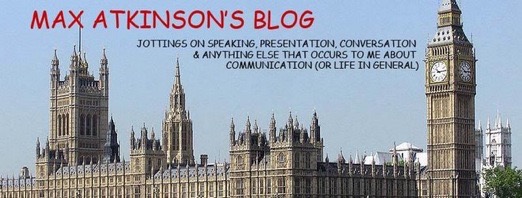
Long ago, when I had to mark hundreds of first year sociology exam papers, the only way some of us managed to stay awake and focussed was to keep a lookout for 'howlers'. For example, one I still remember went as follows:
'The original proletarian worker wore overalls and a cloth cap.'
These days, the embourgeoisment (to retrieve another memory from my sociological past) of the Labour Party has progressed so far that MPs who've ever worn overalls and a cloth cap are an endangered species.
This is presumably why some of the leadership candidates have been invoking their proletarian background. Andy Burnham has written of his humble origins in Liverpool and Ed Balls has told us that one of his grandfathers was a lorry driver.
Simple measurement indices
All this has taken me back to other experiences from long ago, when I used to invent simple indices to assess things as diverse as the probability of ex-prisoners being reconvicted after release from gaol and the suitability of student applicants for admission to a university department.
By giving prisoners a different score on measures like type of offence and number of previous convictions, we were able to discriminate different groups with a high degree of accuracy, ranging from one with a 7% probability of reconviction within three years of leaving prison to another with a reconviction probability of 75%.
Later on, when in charge of admitting students for a university course, I attracted hostility and admiration in roughly equal amounts by devising a weighting system that included different scores according to the type of school they'd attended - in those days, as follows: secondary modern (5) , comprehensive (4), grammer (3), direct grant (2) and public (i.e. fully fee-paying) school (1) - where the higher the score, the lower the 'A' level grades we demanded from them.
With this in mind, I thought it might be an interesting exercise to devise a similar index to guage which of the Labour leadership candidates (so far declared) stands where on the proletarian-bourgeous scale.
Atkinson's proletarian-bourgeois index
To compare them, the scoring system is based on 4 variables - so that the most bourgeois candidates will have the lowest scores and the most proletarian the highest:
A: Father's job
4 Unskilled
3 Semi-Skilled
2 Skilled
1 Professional/managerial
B: Candidate's first job
4 Unskilled
3 Semi-Skilled
2 Skilled
1 Professional/managerial
C: Type of secondary school attended
2 State school
1 Fee-paying school
D: Higher education
2 Non-Oxbridge
1 Oxbridge
RESULTS
According to this, John McDonnell comes out way ahead in the 'most proletarian' stakes, with Ed Balls pipping the Milibands to the post as 'most bourgeois'.
McDonnell
A Bus driver (3)
B First job (4)
C Secondary school (2)
D Higher education (2)
TOTAL: 11
Burnham
A Telephone engineer (3)
B First job (1)
C Secondary School (2)
D Higher education (1)
TOTAL: 7
Abbott
A Welder (2)
B First job (1)
C Secondary School (2)
D Higher education (1)
TOTAL: 6
Miliband D
A University teacher/professor (1)
B First job (1)
C Secondary School (2)
D Higher education (1)
TOTAL: 5
Miliband E
A University teacher/professor (1)
B First job (1)
C Secondary School (2)
D Higher education (1)
TOTAL: 5
Balls
A University teacher/professor (1)
B First job (1)
C Secondary School (1)
D Higher education (1)
TOTAL: 4
ANALYSIS
Maybe this is why Mr Balls has felt it necessary to go back a generation to tell us about his lorry-driving grandfather. His point, as in Andy Burnham's reminder of his humble past, was that their family's social mobility was made possible by the wonderful innovations of past Labour governments.
In their case, it may be true. But things aren't always as simple as that.
It took my paternal grandfather the best part of 40 years to progress from being a farm labourer to a tenant farmer to an owner occupier farmer. But, as the Labour Party didn't even exist for most of that time, they can hardly claim any credit for that.
And, as far as my own case is concerned, I've never been quite sure whether the journey from farmer's son to university lecturer and, more recently, communications consultant, counts as upwards, downwards or sideways social mobility - which is almost certainly one of the reasons why I was never quite convinced by mainstream sociology, and why my escape into the much more interesting world of conversation analysis came as such a relief.






